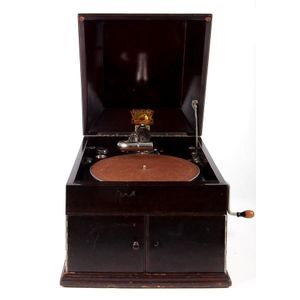Georgian Sterling Silver Rat Tail Spoons (Set of 6)
You must be a subscriber, and be logged in to view price and dealer details.
Subscribe Now to view actual auction price for this item
When you subscribe, you have the option of setting the currency in which to display prices to $Au, $US, $NZ or Stg.
- Verso - Verso is the "back" side of a sheet of paper, art work, coin or medal. The front side is "recto".
- Rat Tail - A spoon with a flattened handle, tapering from the narrow section at the bowl, and wider as the top of the handle, that when viewed from above is of a similiar shape to a rat's tail. Also known as the Hanoverian pattern, as its manufacture spanned the reigns of George I, II and III (part) of the House of Hanover dynasty. The rat tail pattern was the forerunner to the Old English pattern.
- Georgian - As an English stylistic period, Georgian is usually taken to cover the period from George I (1714) to the Regency of Prince George (1811-20), although the period from 1800 to 1830 is sometimes designated as the Regency period. During the Georgian period the great English cabinetmakers and designers such as Chippendale, Hepplewhite, Adam Sheraton etc., were all active.
Therefore there isn't a single 'Georgian style' as such and to say something is 'Georgian', usually means it was made between 1714 and 1830. This assumes we discount George V and George VI, both being from the 20th century.
The styles popular at the time of each reign were:
George I (1714-1727) saw out the last years of the Baroque period.
George II (1727-1760) reigned during the Rococo period.
George III (1760-1820) saw the last gasp of the Rococo, all of the early Neo-Classic 'Adam style' and most of the later neo-Classic 'Regency style'.
George IV (Prince Regent 1820-1830)encompassed the last of the 'Regency' style.
William IV's reign (1830-1837) was something of a no man's land (stylistically) and he wasn't a 'George' anyway. He covered the last glimmerings of 'Regency' and the start of the 'Victorian' style. - Sterling Silver - Sterling silver is a mixture of 92.5% pure silver and 7.5% of another metal, usually copper. Fine silver is 99.9% pure silver, and is relatively soft and the addition of the very small amount of copper gives the metal enough strength and hardness to be worked into jewellery, decorative and household objects.
This item has been included into following indexes:
Visually similar items

A Georgian fruitwood Windsor back chair, with decorative splat back, has old repairs. 64 cm x 48 cm x 101 cm

Very large Chinese Kangxi porcelain punch bowl, in blue and white, with serpentine edge, the interior decorated with a central roundel of flowers, the exterior decorated raised ogee panels of branched flowers, raised on a circular foot, repair, height 18.5

Victorian chess board side table, 19th century, the circular top raised on a barley twisted pedestal, on three scrolling legs, height 74 cm, diameter 47 cm

HMV model Tasman no 2, Tabletop hand crank gramophone circa 1927
